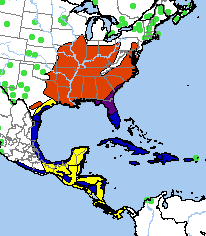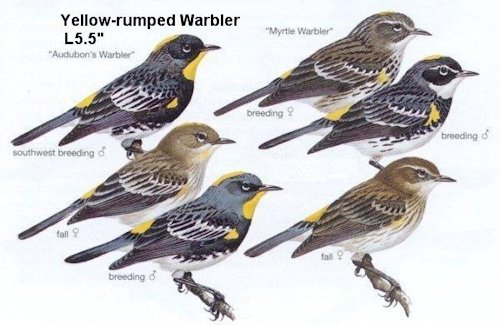

11 from 11-3 for a family open house event featuring adoptable pets, food trucks, and interactive booths for all ages. Habitat: Yellow - rumped thornbills inhabit open woodland areas and edges, farmland, grassland that has trees or bushes sparsely located throughout the area, parks, and gardens. i’m preeeetty sure that the bayberry lookalike on which this ruby-crowned kinglet is feeding is poison ivy.As these birds Northern bayberry (Myrica) has been reported (Hausman 1927) in the diet of Yellow - rumped Warblers and is common on Presque Isle.


This is the last walk i’ll be leading until november as far as i know, so i hope to see some of you there!įinally: i generally don’t recommend grabbing ahold of a bayberry-looking plant unless you’re sure that’s what it is, because poison ivy can look really similar when the leaves have fallen off. Oct 2 - i’ll be in brooklyn’s prospect park leading a walk from 8am to 10am. we saw a lot of surprising birds up close last week so i’m hoping this week will be just as good.

Sept 30 - i’ll be at bryant park again at 5pm, at the entrance on 42/6. People have actually been coming to my walks from the newsletter - it’s great and i hope to continue seeing some of you there! i have two more walks this week: they make me happy and provide me with good newsletter fodder. Please keep sending me viral nature tweets. either way, it’s pretty neat to me that for so many birds, new york’s coast becomes a critical part of their wintertime survival thanks to this nice-smelling plant. and, i don’t know, maybe the urban heat island effect makes the city a slightly more appealing wintertime habitat. While new york’s sandy soil and salty air probably doesn’t sound appealing to your average plant, it’s perfect for bayberries, and therefore perfect for yellow-rumps and some tree swallows, too. these birds, too, are capable of digesting bayberries and will survive on bayberries when insects are scarce. last winter, birders were regularly reporting dozens to hundreds of tree swallows at breezy point in queens into february. but, while their relatives migrate deep into the tropics during the winter, tree swallows stay in the southeastern united states, and in some years, into new york city or even further north. Tree swallows are aerial insectivores they specialize in fluttering around big open spaces to catch flying insects. this adaptation allows them to winter where tropical birds can’t, as far north as nova scotia.Įastern yellow-rumped warblers are so tied to these plants that they were once called the myrtle warbler, from wax-myrtle, a plant closely related to the bayberry on which the warblers feed in the more southerly part of their wintering range. according to birds of the world, the stomachs of butterbutts in coastal north carolina contained around 78% plant material, mostly bayberry. yellow-rumps are also bug eaters in the summer and on migration, but not as much in the winter. warblers are typically a tropical, insect-eating bunch, spending all but the breeding and migratory seasons in central or south america before heading northward to raise a family on the glut of protein-rich insects in the northern forest each summer. The yellow-rumped warbler, affectionately known as the butterbutt (or yump), happens to be bayberry aficionado numero uno, and is therefore among the most common wintertime songbirds on the nyc coast thanks to these fragrant shrubs.


 0 kommentar(er)
0 kommentar(er)
